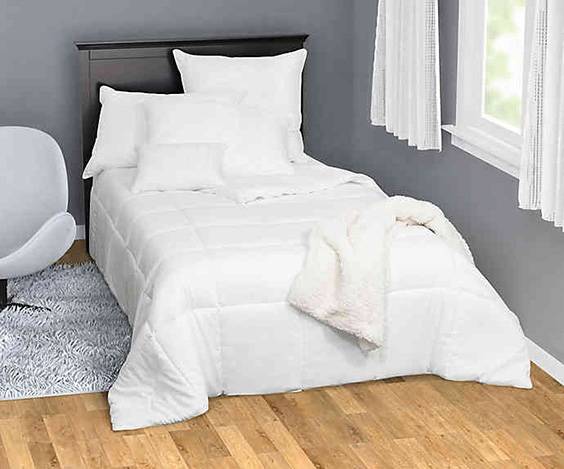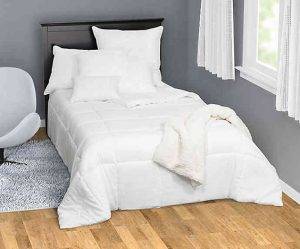
Today, we are going to focus on the characteristics of a down alternative comforter, while aiming to compare its characteristics to natural down products, in order to give you the bigger picture as to why these two types of products are very different, yet they can both be just as good for different kinds of sleepers. To top it all off, we’re going to show you one of the best and cost-friendly down alternative products that money can buy: The Beautyrest Solid down alternative comforter.
Down vs. Down Alternative Comforters
A lot of people are probably wondering what the big difference between a down and a down alternative comforter is. While the names might sound the same, they depict two very different products, with individual characteristics that you should know about if you are to make an informed shopping decision:
- Down refers to an insulating layer that is commonly found under the feathers of geese and ducks. Down comforters have a fill made from chunks of this particular type of insulation, although there are down comforters that are actually filled with a mix between down and feathers. Down alternative comforters, on the other hand, are made from synthetic materials, some of which are man-made (like polyester blends) and some being natural (like cotton or wool).
- The second major difference between these two types of comforters is the insulation power of each. The insulation of a comforter refers to its ability to be able to trap heat underneath the blanket, thus leading you to feel warmer. The insulation level of a comforter is depicted by its fill power. Mathematically speaking, the fill power of a comforter is only calculated for natural down products and it shows how many cubic inches one ounce of down occupies inside the comforter. Down has a higher fill power compared to down alternative, meaning that it takes less natural down to have a better insulating comforter compared to how much synthetic fill would be needed to achieve the same level of insulation. Down comforters that have high fill power (more than 550) do a better job at providing warmth, while also being relatively lightweight.
- The third aspect that you should know about refers to allergies. Even if down comforters are of better quality compared to those filled with down alternative, they are also more likely to trigger allergies in particular categories of sleepers. It is very likely for people who have allergies to react to the natural down fill, which is why they prefer down alternative comforters instead. For the most part, down alternative comforters are hypoallergenic.
Since natural down comforters are better (this is still a subjective matter because, for instance, if you have allergies, down comforters are not the “better” solution), they also tend to be more expensive. Aside from the advantages they offer, natural down comforters are also filled with a limited type of resource, unlike polyester fill, for example, which is relatively easy to make any time, provided that you have the technology to do so. As a consequence, down comforters are more expensive compared to down alternative ones. However, if the down alternative comforter you’re looking into is made with an expensive fabric/fill (such as wool or silk), it can also be a bit pricey.
- Another important aspect that makes a difference between down and down alternative comforters is the ease of maintenance. For the most part, down alternative comforters are easier to clean compared to those filled with natural down. If the ease of maintenance is something that you’re interested in, you surely want to choose a down alternative comforter. However, you should keep in mind the fact that down alternative comforters aren’t as durable as their natural down counterparts, and when you clean them, they are likelier to fray.
Read our comparison article here.
Down Alternative Comforter Fill
We have already established the fact that down comforters are filled with down sourced from geese and ducks, but what exactly can you expect to find inside a down alternative comforter?
- Polyester fill is the most common choice for brands who want to make inexpensive comforters. Polyester is a cheap material and it’s also relatively easy to make, so when you spot a down alternative comforter at a really low price, expect it to be filled with polyester. Because the material is flexible, manufacturers can “mold” it so that it can have different lofts and weights.
- Primaloft is another type of fill that you can find in down alternative comforters. It is a synthetic fabric that manages to provide good insulation while still being lightweight. It is also likely to find Primaloft comforters that have been treated to make the fill water-resistant.
- You can also find down alternative comforters that have gel fibers inside them. These fibers will typically provide more warmth and better insulation compared to fill made from basic polyester down alternatives.
While the three examples above show the three main options that manufacturers go with to create down alternative comforters, there are other options made with natural materials, such as:
Cotton comforters can be a good choice for people who don’t want a product filled with synthetic blends. If you own at least one piece of clothing made from cotton, then you already know the level of comfort and softness that this fabric can provide. However, know that in spite of its softness and breathability, cotton isn’t that keen on providing good insulation, so you can never expect a cotton-filled comforter to be extremely warm during the winter.
Comforters can also be filled with wool. Needless to say, these are extremely good at trapping heat, making wool comforters aces at insulation and great for winter use. Wool is also known for its moisture-wicking capacity, which makes it a suitable contender for a good summer comforter fill. However, wool comforters are heavy and they cost quite a lot to make. Since the market demand for such products is pretty low, it is not easy to find wool comforters in just any store. On top of all that, wool comforters are also quite expensive.
- You can also find comforters that are filled with silk. There are many benefits to a silk-filled comforter, such as a high level of breathability, softness, or lightweight. However, much like cotton, silk comforters will never have the same insulating capacity as products made from natural down.
Comforter Outer Cover Materials
For the most part, down comforters feature a cotton outer shell with a thread count of at least 300. This combination is important because if the comforter also has a few feathers in its fill, the outer shell needs to have a tight weave that will ensure the feathers don’t poke you. But what about down alternative comforters? They don’t have feathers, so what are some of the outer shell material choices that manufacturers go with?
Microfiber/polyester outer shells are a very common choice for down alternative comforters. These synthetic materials and blends make total sense in the construction of such a product because down alternative comforters are often about saving money, good money that you would otherwise spend on a natural down product. Since these synthetic fabrics are less expensive, they allow manufacturers to keep the price of the product down. Furthermore, these blends are capable of providing breathability and softness, although the latter may not be such an important feature if you’re planning to use your comforter with a duvet cover.
Cotton covers on down alternative comforters are another good choice and one that you are likely to come across in your shopping sprees. Cotton isn’t really that expensive to the product, but it can vary quite a lot in terms of quality, especially when you consider aspects like type of weave and thread count: two factors that can vary significantly from one product to another. Cotton’s level of breathability is influenced by the weave and how thick the fabric is.
- Down alternative comforters may also have a wool outer shell. The benefits of using such a product are mostly moisture-wicking and good insulation levels. However, considering the fact that wool is an expensive material, finding a down alternative comforter with a wool outer shell is highly unlikely.
- Silk can also be used to make the outer shell of a down alternative comforter, but you’re just as likely to find this combo as you are finding wool down alternative comforters. If you do, you should know that silk is very smooth and soft, but also one of the most naturally-cooling fabrics that’s used in the bedding industry. Needless to say, silk is also quite expensive.
Comforter Stitches
Down and down alternative comforters usually have one of the following types of stitches:
Box stitches are probably the most common types of stitches that down alternative comforters have. They are characterized by the upper and lower layers of the comforters being stitched together, thus creating boxes with even filling inside them. This type of construction is meant to help avoid cold spots by preventing fill from shifting inside the product.
Baffle box stitching refers to a rectangle design inside the sheets. This construction basically creates pockets that are sewn inside the comforter, which makes it appear fluffier. Comforters that have this type of stitching are usually more expensive because each of the pockets is filled with air and is, therefore, more complicated to make.
- Sewn-thru comforters are characterized by two pieces of fabric sewn together, filled with down or down alternatives, and then ran through a quilting machine.
- Ring stitches are exactly what they sound like: they create circular patterns instead of boxes and have intermittent stitches holding the upper and the lower layer of the comforter together. Comforters that have this type of stitching are the least expensive, but the main downside is that fill will often shift from the center to the edges.
- Channel quilt comforters are characterized by stitching that creates channels going all the way from the head to the foot. The main drawback of this type of stitching is that the down can move around the sleeper.
A Look into the Beautyrest Solid Down Alternative Comforter
The Beautyrest comforter is, beyond a shred of a doubt, one of the best down alternative comforters that money can buy. Even if it isn’t constructed with high-end down alternative materials, it bears the name of a respectable brand that always seeks to balance the quality of the products it creates with a price that everyone can afford.
— Construction
The comforter debuts with a cover that’s made from microfiber polyester, which feels surprisingly soft to the touch and has a smooth finish that reminds us of cotton quite a lot. Even if the outer shell of the comforter seems to be durable for a down alternative product, it is still advisable that you use it with a suitable duvet cover so that you can prolong the lifespan of the product.
Inside the comforter, you can find polyester fill, which is pretty much the standard choice for most affordable down comforters. Because the comforter is made with a box stitching, it can prevent the polyester fill from shifting position, ensuring that the product doesn’t have any cold spots even if you are the kind of sleeper that tends to move a lot during the night.
— Available Sizes
The comforter is available in three standard sizes, which is something that we’re used to seeing in most products from this category. You can purchase the comforter in:
- Twin size, measuring 66 x 90 inches and which has a total fill weight of 28 oz.
- Full/Queen size, measuring 92 x 90 inches and which has a total fill weight of 39 oz.
- King size, measuring 94 x 104 inches and which has a total fill weight of 45 oz.
Each of the comforters you buy will be backed up by a three-year warranty.
— Care
The good news is that the Beautyrest down alternative comforter is one of those products that you can wash inside your home washing machine. For the best results and in order to preserve the integrity of the product, it is advisable that you use a front-loading machine.
— Customer’s Opinion
The Beautyrest down alternative comforter was very well received by the people who decided to give it a try. Everyone who expected to receive a lightweight and all seasons use-type of the product was thrilled with the performance of this comforter.
Despite it being a lightweight product, the comforter manages to provide a good level of insulation, which is what you want in a product that’s designed to keep you warm during the winter. People who slept under this comforter during the summer reported good levels of breathability and comfort as well.
Overall, sleepers who trusted the Beautyrest brand enough to buy this comforter claim that it delivers exactly as expected considering the price, many claiming that this is one of the best down alternative comforters that money can buy.
Conclusion
As you can see, there are plenty of benefits to choosing a down alternative comforter instead of one made from natural down. Whether you are driven by the low cost, the ease of washing the comforter, or the fact that you have allergies that are triggered in the presence of natural down, knowing what to look for in a down alternative comforter can lead to a positive shopping experience and can guide you towards products that are just as amazing and qualitative as the Beautyrest Solid down alternative comforter.
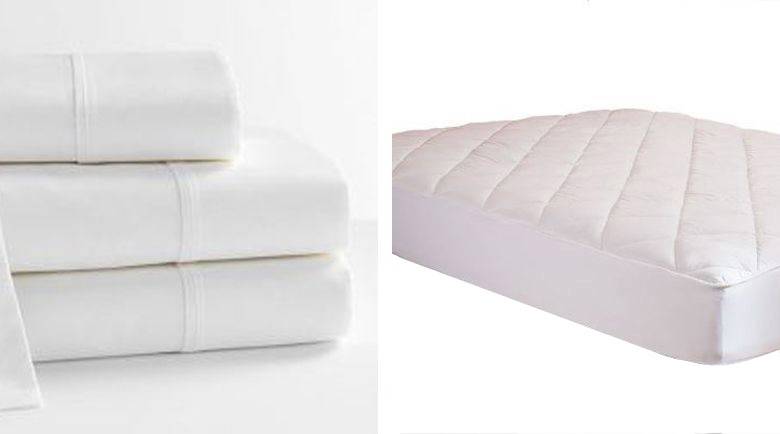
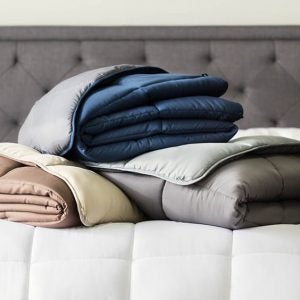 Since natural down comforters are better (this is still a subjective matter because, for instance, if you have allergies, down comforters are not the “better” solution), they also tend to be more expensive. Aside from the advantages they offer, natural down comforters are also filled with a limited type of resource, unlike polyester fill, for example, which is relatively easy to make any time, provided that you have the technology to do so. As a consequence, down comforters are more expensive compared to down alternative ones. However, if the down alternative comforter you’re looking into is made with an expensive fabric/fill (such as wool or silk), it can also be a bit pricey.
Since natural down comforters are better (this is still a subjective matter because, for instance, if you have allergies, down comforters are not the “better” solution), they also tend to be more expensive. Aside from the advantages they offer, natural down comforters are also filled with a limited type of resource, unlike polyester fill, for example, which is relatively easy to make any time, provided that you have the technology to do so. As a consequence, down comforters are more expensive compared to down alternative ones. However, if the down alternative comforter you’re looking into is made with an expensive fabric/fill (such as wool or silk), it can also be a bit pricey.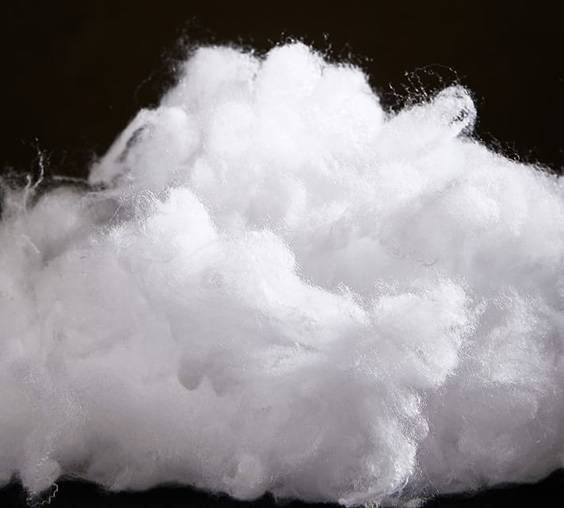
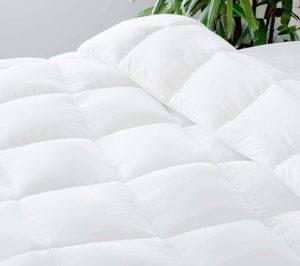 Cotton comforters can be a good choice for people who don’t want a product filled with synthetic blends. If you own at least one piece of clothing made from cotton, then you already know the level of comfort and softness that this fabric can provide. However, know that in spite of its softness and breathability, cotton isn’t that keen on providing good insulation, so you can never expect a cotton-filled comforter to be extremely warm during the winter.
Cotton comforters can be a good choice for people who don’t want a product filled with synthetic blends. If you own at least one piece of clothing made from cotton, then you already know the level of comfort and softness that this fabric can provide. However, know that in spite of its softness and breathability, cotton isn’t that keen on providing good insulation, so you can never expect a cotton-filled comforter to be extremely warm during the winter.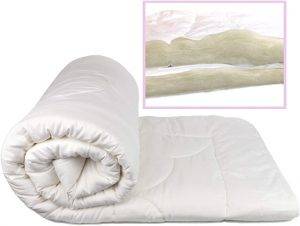 Comforters can also be filled with wool. Needless to say, these are extremely good at trapping heat, making wool comforters aces at insulation and great for winter use. Wool is also known for its moisture-wicking capacity, which makes it a suitable contender for a good summer comforter fill. However, wool comforters are heavy and they cost quite a lot to make. Since the market demand for such products is pretty low, it is not easy to find wool comforters in just any store. On top of all that, wool comforters are also quite expensive.
Comforters can also be filled with wool. Needless to say, these are extremely good at trapping heat, making wool comforters aces at insulation and great for winter use. Wool is also known for its moisture-wicking capacity, which makes it a suitable contender for a good summer comforter fill. However, wool comforters are heavy and they cost quite a lot to make. Since the market demand for such products is pretty low, it is not easy to find wool comforters in just any store. On top of all that, wool comforters are also quite expensive.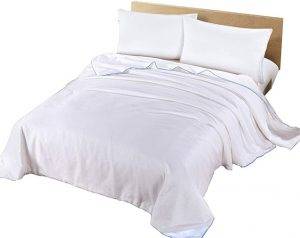
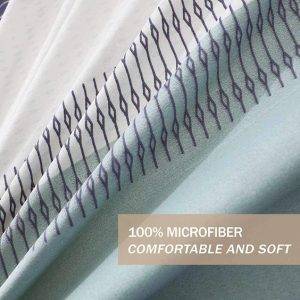 Microfiber/polyester outer shells are a very common choice for down alternative comforters. These synthetic materials and blends make total sense in the construction of such a product because down alternative comforters are often about saving money, good money that you would otherwise spend on a natural down product. Since these synthetic fabrics are less expensive, they allow manufacturers to keep the price of the product down. Furthermore, these blends are capable of providing breathability and softness, although the latter may not be such an important feature if you’re planning to use your comforter with a duvet cover.
Microfiber/polyester outer shells are a very common choice for down alternative comforters. These synthetic materials and blends make total sense in the construction of such a product because down alternative comforters are often about saving money, good money that you would otherwise spend on a natural down product. Since these synthetic fabrics are less expensive, they allow manufacturers to keep the price of the product down. Furthermore, these blends are capable of providing breathability and softness, although the latter may not be such an important feature if you’re planning to use your comforter with a duvet cover.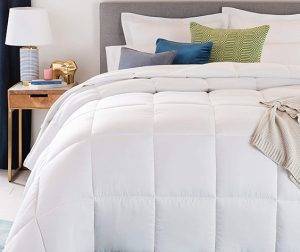 Cotton covers on down alternative comforters are another good choice and one that you are likely to come across in your shopping sprees. Cotton isn’t really that expensive to the product, but it can vary quite a lot in terms of quality, especially when you consider aspects like type of weave and thread count: two factors that can vary significantly from one product to another. Cotton’s level of breathability is influenced by the weave and how thick the fabric is.
Cotton covers on down alternative comforters are another good choice and one that you are likely to come across in your shopping sprees. Cotton isn’t really that expensive to the product, but it can vary quite a lot in terms of quality, especially when you consider aspects like type of weave and thread count: two factors that can vary significantly from one product to another. Cotton’s level of breathability is influenced by the weave and how thick the fabric is.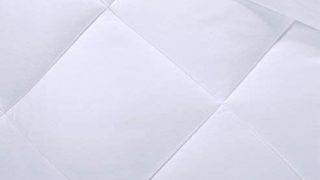 Box stitches are probably the most common types of stitches that down alternative comforters have. They are characterized by the upper and lower layers of the comforters being stitched together, thus creating boxes with even filling inside them. This type of construction is meant to help avoid cold spots by preventing fill from shifting inside the product.
Box stitches are probably the most common types of stitches that down alternative comforters have. They are characterized by the upper and lower layers of the comforters being stitched together, thus creating boxes with even filling inside them. This type of construction is meant to help avoid cold spots by preventing fill from shifting inside the product.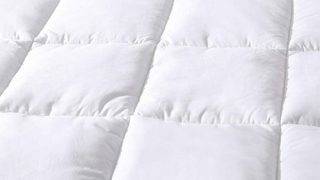 Baffle box stitching refers to a rectangle design inside the sheets. This construction basically creates pockets that are sewn inside the comforter, which makes it appear fluffier. Comforters that have this type of stitching are usually more expensive because each of the pockets is filled with air and is, therefore, more complicated to make.
Baffle box stitching refers to a rectangle design inside the sheets. This construction basically creates pockets that are sewn inside the comforter, which makes it appear fluffier. Comforters that have this type of stitching are usually more expensive because each of the pockets is filled with air and is, therefore, more complicated to make.